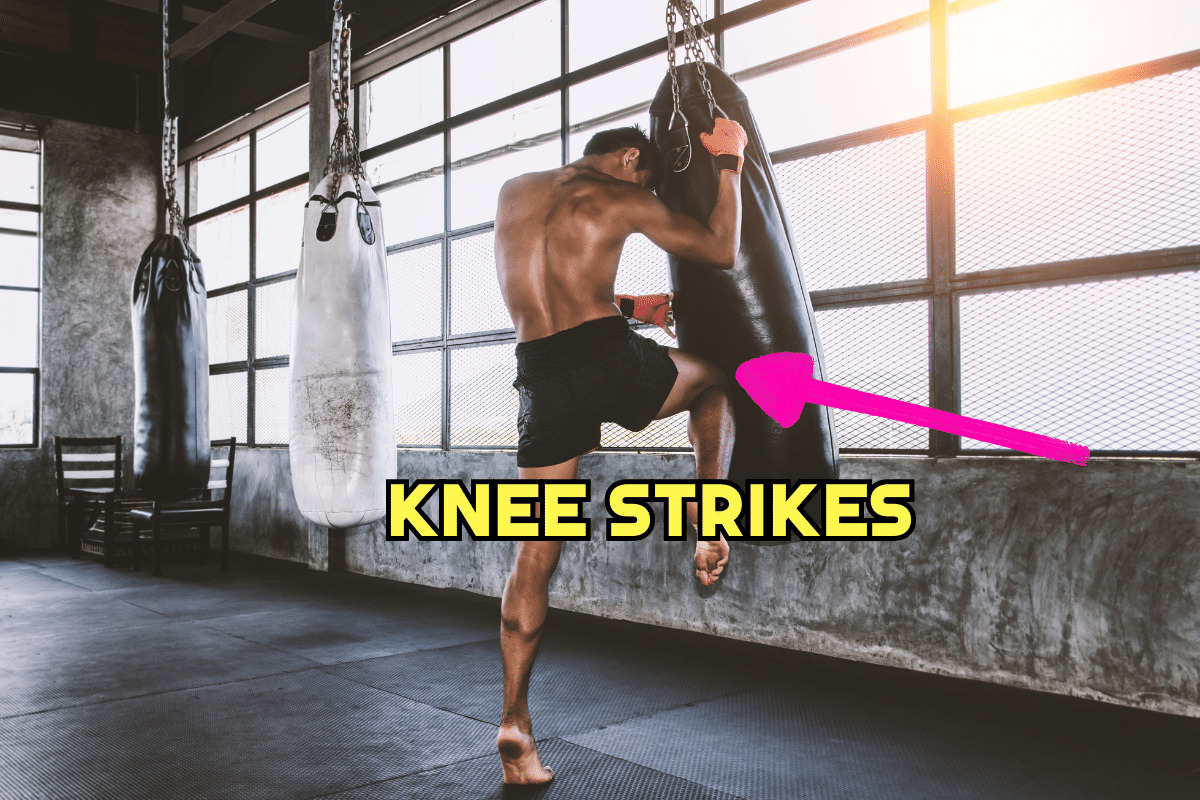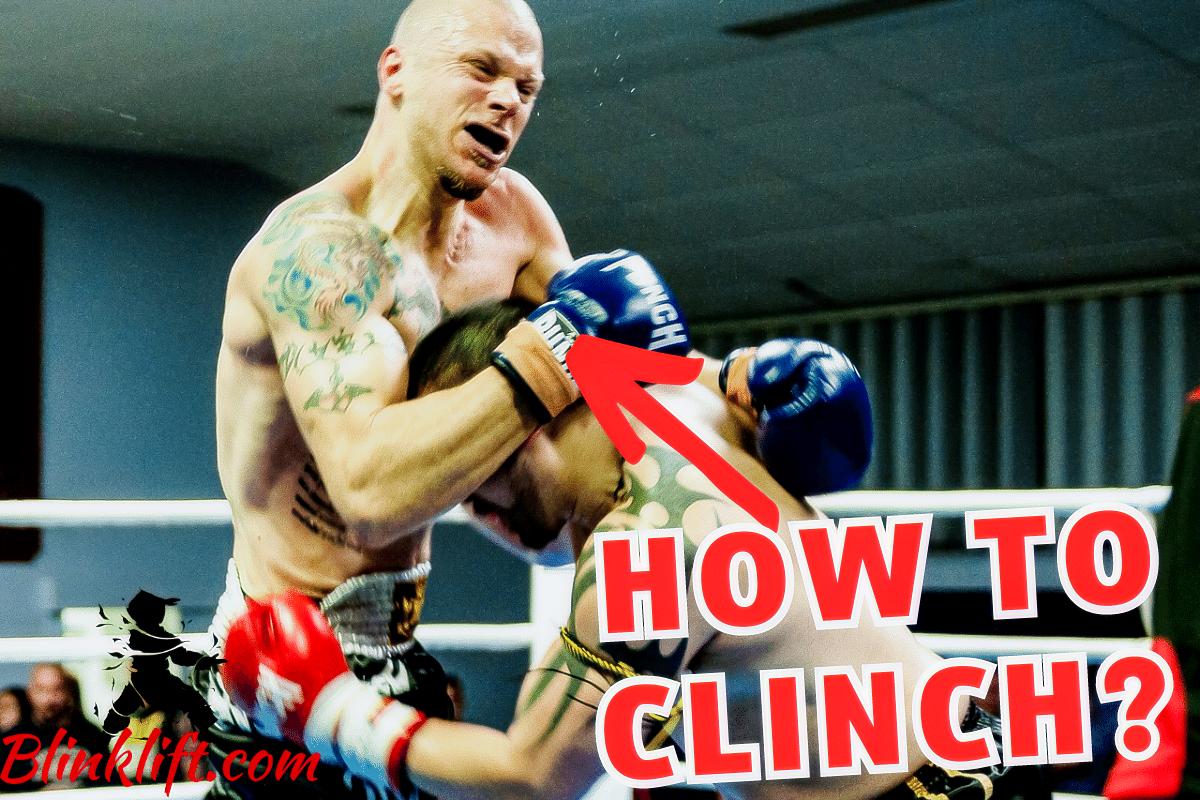In the electrifying world of Muay Thai, the Clinch is one of the most effective and powerful tools you can use to maneuver your opponent and control him as you wish. Whether you’re a seasoned fighter or a novice, you’ll benefit from learning and honing your Clinching skills in The Art of Eight Limbs, aka Thai Boxing.
What we’ll cover in this article is how to use the Clinch effectively in Muay Thai. I hope you’re ready to learn about one of the most useful and striking tools you must know to consider calling yourself a Muay Thai fighter.
In my experience, you can use the Clinch to turn a losing battle into a winning endeavor. You’ll be able to control your opponent, throw him to the ground, throw Elbows, Knee Strikes, and even Uppercuts. All in all, it’ll allow you to become a much, much better fighter.
So I hope you’re as excited as I am to start diving into the flamboyant world of Clinches. I’m sure you’ll enjoy reading the following practical and simple-to-understand points that will make you from a novice to a fighter who knows to maneuver himself and his opponent so as to control him further.
Let’s dive in!
#1 – Footwork and positioning
The first point we’ll review is setup. This is a critical point to understand if you’re interested in getting into the Clinch more smoothly while maneuvering yourself better. What this point will help you do is, again, move more smoothly, which is key to Muay Thai—and martial arts in general.
Proper footwork is essential in setting up and maintaining the Clinch. Move quickly and fluidly, and position yourself in a way that allows you to control your opponent’s balance.
Let’s now discuss how you can enter the Clinch itself. The simplest way you can go about it is by throwing a Jab–Cross combination (1-2) and following it up with an Elbow Strike. Then, instead of returning to your fighting stance, you want to enter the Clinching position, which we’ll review in the following section.
Furthermore, you want to ensure proper footwork throughout the entirety of your execution. The goal is to position yourself appropriately to your opponent, and only then enter the Clinch.
Experiment with the setup I’ve mentioned in this section. See if it makes it easier for you to penetrate the opponent’s defense and give you the upper hand in the fight.
#2 – Control the neck and arms
The point we’ll review right now is going to be entirely about control. You must follow through with this step to ensure you get it right. Control is the name of the game in Clinching—and all other grappling-based martial arts, such as BJJ.
When entering the Clinch, aim to secure a dominant grip on your opponent’s neck or head. This grip will provide you with control and leverage. Additionally, use your arms to wrap around your opponent’s shoulders or under their armpits to further control their upper body.
Grips are, once again, the name of the game when discussing Clinching. You must make sure to get it right if you desire to find any success with this electrifying, powerful tool.
The best grips are the back of the head (which gives you more control than gripping the Posterior Cervical Area), the shoulder, and underhooking the armpit. All of these allow you to control the opponent and set up throws and strikes much more fluently.
#3 – Head position and posture
What we’ll review next is the head position. There are a few ways you can use your head to further control the opponent. That, however, depends on which Clinching position you’re currently in.
Maintain good posture in the Clinch by keeping your head up and pressing it against your opponent’s head or face. This allows you to control their movements and limits their striking options.
Another way is to tuck your head and press it against the opponent’s neck. If you compliment it with proper hand grips while pulling your opponent toward your head, which creates further pressure, you’ll be able to ensure your opponent is uncomfortable and that the control is yours.
The video below is a fantastic example of using your head to either counter or control your opponent. Watch the following video to further understand head positioning and posture in Muay Thai Clinches.
#4 – Off-balancing and sweeps
Now that you’re more familiar with head position and footwork, it’s time we delve into the more advanced stuff regarding Clinches. When in the Clinch, you want to learn to off-balance your opponent properly and throw him to the ground. This will give you tons of new offensive options to go for, especially getting more control in the fight.
Once you have control of your opponent’s upper body, work on off-balancing them to disrupt their balance. You can achieve this by using your body weight, positioning, and subtle movements. Take advantage of opportunities to execute sweeps or takedowns to gain an advantageous position.
Many non-Muay Thai disciples believe it’s only a striking-based martial art. However, what most people don’t know is that it also teaches various grappling movements. The primary and most used ones are throws and sweeps, which are much more common than you think.
The Clinch can provide a medium to throw or sweep your opponent to the ground, gaining the advantage. You want to ensure you learn to use this tool to become a more formidable, dynamic fighter. Your opponents will fear you more if you’re capable of throwing a dazzling sweep or throw.
Remember, the more you know, the more intimidating and adoptive of a fighter you’ll end up being.
#5 – Strikes and Knees
The next subject of matter is how can you use the Clinch to cause real damage to your opponent. When you imagine this position, which techniques, in your opinion and from your experience, would work best?
While in the Clinch, utilize strikes such as short punches, elbows, and knees to inflict damage on your opponent. Aim for vulnerable areas like the ribs, liver, and face. Knees are particularly effective in the Clinch and can be devastating when applied correctly.
Let us dive a bit more specifically; you have a few options to throw a knee while Clinching. One of these options is to open up distance by pushing the opponent and stepping back. Then, you’ll have more than enough room to throw a powerful Knee Strike. You can aim anywhere that you think you’ll hit.
Another example is if you’re in a dominant Clinch position, which is typically when you have hand control, you’ll be capable of throwing Knee Strikes much more effectively and smoothly. You might even be able to hit the head with your Knee if you grip the back of his head while pulling it down and opening up some room to throw the move.

#6 – Defense and countering
The 6th step in using your Clinch effectively won’t be a step that will help you cause more damage to your opponent. That’s not the case so much. However, what it will help you do is avoid getting hit as often, which should be a major goal of yours.
In the Clinch, expect your opponent to attempt strikes and counter accordingly. Stay alert, protect yourself by keeping your guard up, and be prepared to block, parry, or evade strikes. Look for opportunities to counter with your own strikes or create openings for additional attacks.
#7 – Constant pressure
Some fighters tend to look at the Clinch in the wrong way and let me explain myself. Boxers use the Clinch for one purpose and one purpose only. That purpose is to force the referee to reset the fight, as it’s illegal to use in competitions and all other settings.
Resetting the fight will allow the Boxers to rest. So if one boxer Clinches, his purpose for that is to reset the fight, which makes sense since he wants to rest. However, the case is different in Thai Boxing, where Clinching is legal.
Let’s now examine what’s different from Muay Thai to Boxing and why you want to maintain constant pressure when Clinching.
Maintaining constant pressure is crucial in the Clinch. Stay active by utilizing a combination of strikes, off-balancing techniques, and repositioning to keep your opponent off-balance and under pressure.
Clinching isn’t a time to rest. It’s time to shine. You might actually work harder when in such a position because you’ll be constantly fighting for hand control with your opponent. Likewise, you’ll be getting Kneed to the ribs and maybe to the head, which is going to hurt.
To counter that, you must strive to remain as active as possible while applying pressure on your opponent. The time to rest will come after the fight; now, it’s time to work hard.
Final Words
Mastering the Clinch in Muay Thai is a skill that can greatly elevate your fighting game. By incorporating proper footwork, dominant grips, off-balancing techniques, and a variety of strikes, you can effectively control your opponent and unleash devastating attacks from close quarters.
Remember, developing proficiency in the Clinch takes time and dedication. Consistent training, guidance from experienced coaches, and ample sparring sessions are key to honing your technique and refining your instincts. Embrace the challenge, embrace the Clinch, and watch your Muay Thai skills soar to new heights.
Here are other articles you’ll definitely enjoy reading if you liked this one:

